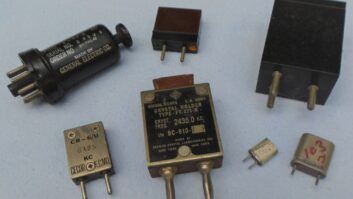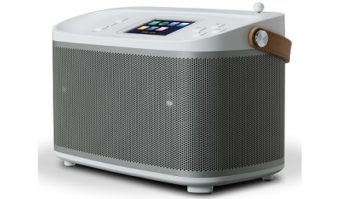When Rob Atkinson saw our photo of a dual-coil telephone line contraption in Workbench last month, he immediately thought of something he’d used with his own Plain Old Telephone Service in the past but later removed after converting to DSL or VoIP phone service.
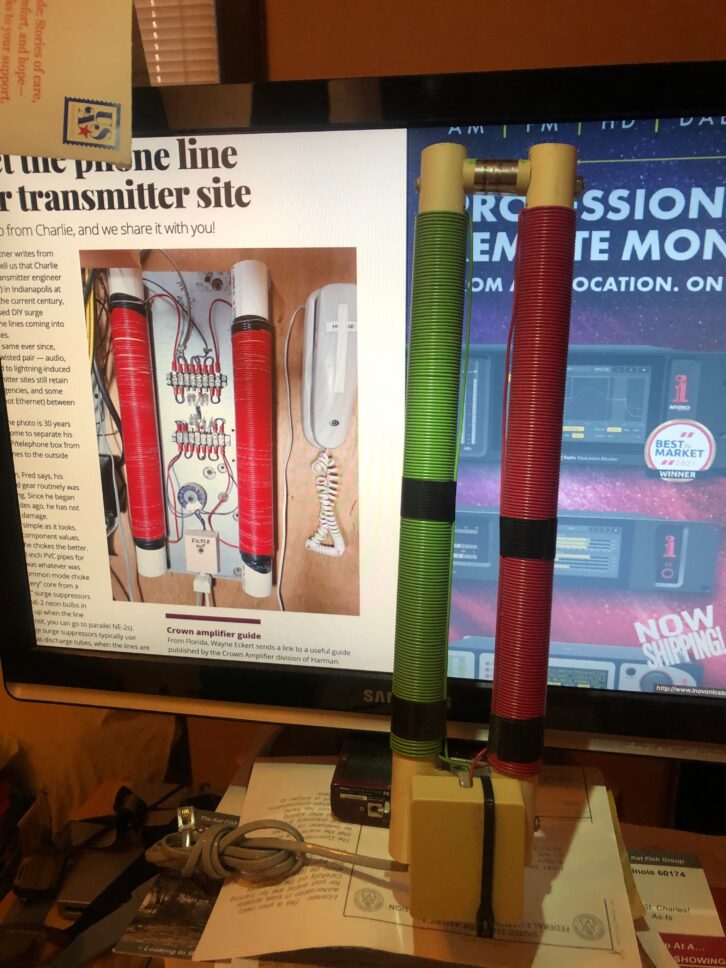
Searching in his basement, he found it and encloses the photo you see here, showing it next to our earlier article on his computer screen. What fun.
He said the contraption bears the label “Broadcast Technical Maintenance Service — Charles D. Sears.” Sears was a longtime TV engineer in Indianapolis and worked at other TV and radio stations; he was a member of SBE and ARRL.
How Rob came to own this is lost in the mists of time. It may have been in a dark AM site that he was cleaning out for a client, or maybe it was at a hamfest. Rob says he may very well use it when he has to run a line for DC out to one of his ham antennas.
Gear gone by
Check out the second photo. When is the last time you saw one of THESE babies? A real live Otari MX-5050 in full working condition?
Al Peterson has been on a quest to digitize his entire collection of reels and cassettes stretching from the start of his career (1977, college radio) ’til the dawn of MP3 storage. He needed a half- and a quarter-track machine to access the contents of the reels. Both are hard to come by since tape was phased out in the 1990s. Even AV companies and recording studios came up dry when he asked around.
Enter Virginia broadcast engineer and fellow ham Chris Courson. He’s the guy who keeps WMBG(AM), its FM translator and many other local signals humming happily along. When Alan asked where he might find a working reel-to-reel, Chris loaned his personal 5050 to complete the task.
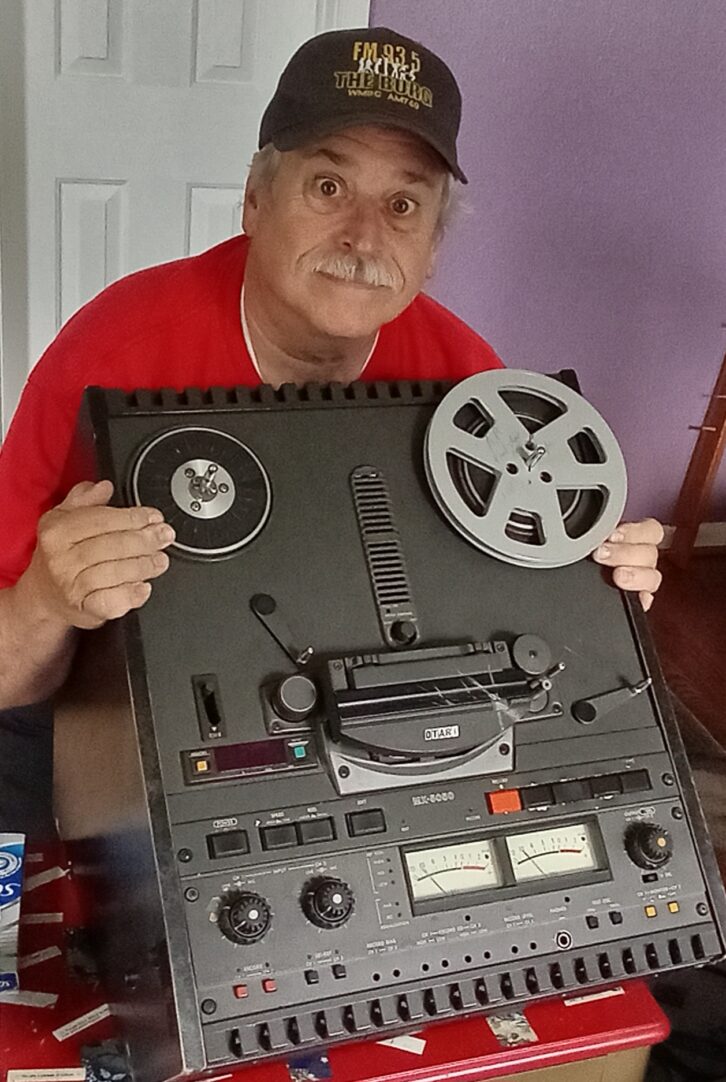
What’s nice about this model is that it has a head switch, which allows the playback of two-track or quarter-track tapes.
For three straight weeks of evenings in his home recording space, Al says that Otari brought back memories of crazy on-air shifts, wacky commercials and even a few forgotten childhood tapes that got mixed in. (He says it’s amazing how bodily function sounds are still funny nearly 60 years later.)
In the end, Alan was a little bummed to discover that his entire life in audio fit neatly on a pair of DVDs, with room to spare. But he hands it to those Otari folks: They made a tape deck that was bullet-proof and can still turn in a stellar performance these many years later.
Al jokingly captioned his photo “Two Old Fossils in One Picture.”
Do you have a favorite piece of “gear gone by”? Tell us so we can share it with your fellow Workbench fans. Don’t forget to include a high-resolution picture. Email me at [email protected].
Copper and self-inductance
In the April 5 issue of RW Engineering Extra (the one with the cool story about the NAB PILOT test bed), Steve Walker wrote about practical grounding tips to thwart lightning. Paul Sagi then emailed us from Malaysia to comment on the good tips Steve offered.
When dealing with lightning, Paul suggests that copper strap is superior to round copper wire due to the strap’s lower self-inductance.
Self-inductance is an issue because the lightning current has a very fast rise time. An equation that helps one understand the situation is V=I (di/dt). In this formula, I is inductance, and the formula indicates the voltage generated depends on the inductance and the rate of change of the current (di/dt).
Paul found this relevant years ago in a factory that built and tested 33 kV switchgear. When they tested it at 68 kV, the factory destroyed the tester Paul’s company had sold them. Flashovers caused surge currents that were effectively bolts of lightning.
After making a diagnosis, Paul met with the company’s CEO and wrote two equations on a napkin: I = C (dv/dt) and V = I (di/dt).
The C came from the insulators in the switchgear. The flashovers were rapid discharge from 68 kV to 0 V, thus a very large dv/dt.
Paul suggests that if copper strap isn’t available, use many parallel round ground wires. Making the grounds parallel reduces the overall inductance.
Give us the bird
We’ve received a number of comments about what kind of bird may have created the haystack mess in the communications shelter pictured in the previous Workbench.
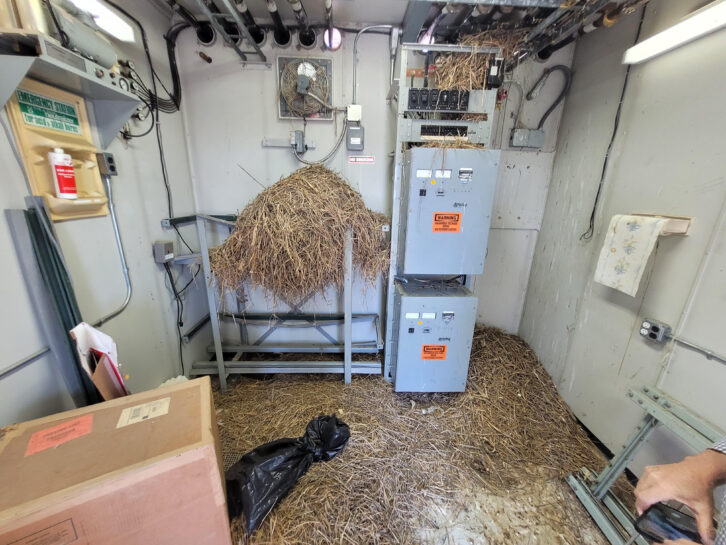
Workbench contributor Ken Lundgren also asks about that shelter. In fairness we should note that the building had been abandoned for some time (though our tip about those missing rubber boots remains in effect). An engineer who had been sent to that site to ready it for a new transmitter installation discovered the mess.
The large primary haystack makes one think of a big bird. Ken thinks those “nests” don’t look like the work of a robin or sparrow, but could a big bird fit through the open coax port, or was it just an industrious avian? What do you think?
Share that thang! Your oldie is someone else’s goodie. Tips qualify for SBE recertification credit. Email [email protected].





